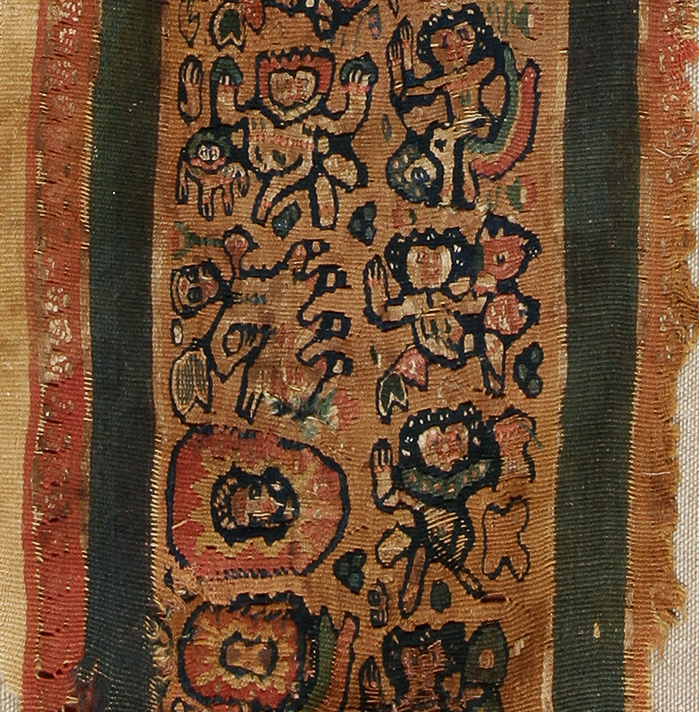On each side of the central band is a blue band edged with a red frieze of wave scrolls. The central section has a mass of stylised figures and medallions with figures or rosettes among leaves and flowers on an orange ground. Most of the figures are dancing with raised arms and legs crossed. Centaurs can be recognised by their human body on four legs.
Origin:
Egypt
Date:
6th - 8th century
Material:
Linen and wool
Dimensions:
Warp: 17 cm; weft: 84.5 cm
Comparisons:
Cf. FT 73.
Pouchkine, inv. 617.
Cleveland Art Museum, inv. 1926.149.
Provenance:
Collection Coptic textiles Fill-Trevisiol: donation
Location:
Musée royal de Mariemont
Woollen tapestry
I. No ground weave
II. Tapestry areas
Warp:
natural-coloured wool S: 10/cm
Weft:
red, blue, pink, green and orange wool S: 48-60/cm; natural-coloured linen S: 40-55/cm
Weave:
weft-faced tabby
Special techniques:
slit tapestry, eccentric weft; dovetailing, soumak and vertical weft brocading

